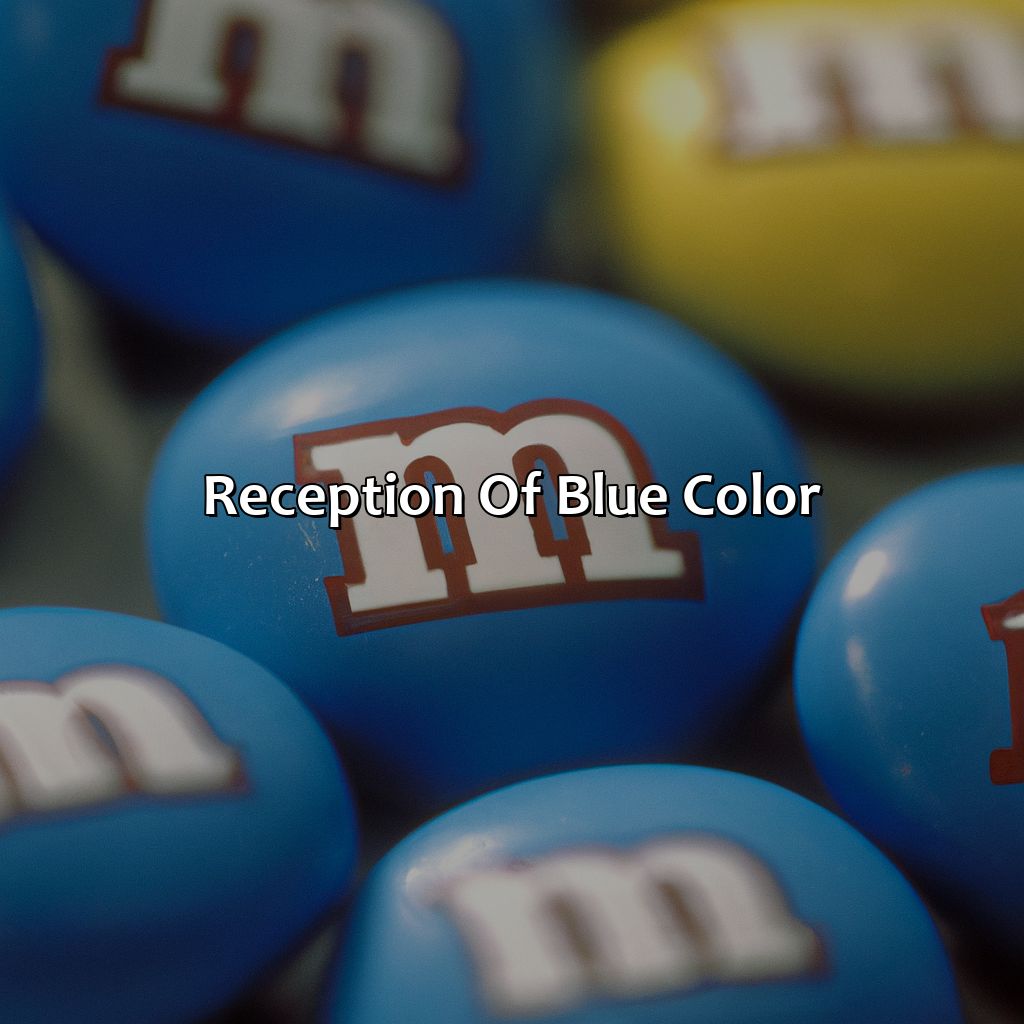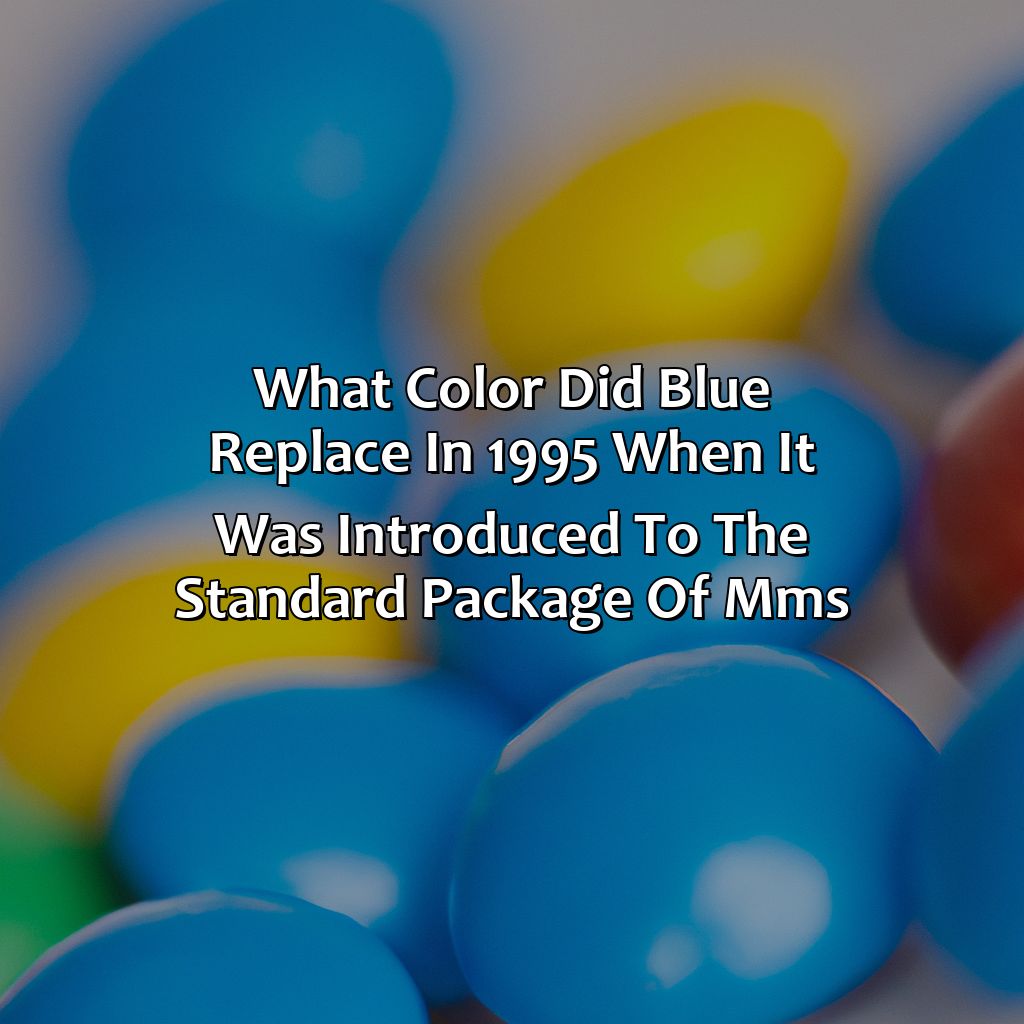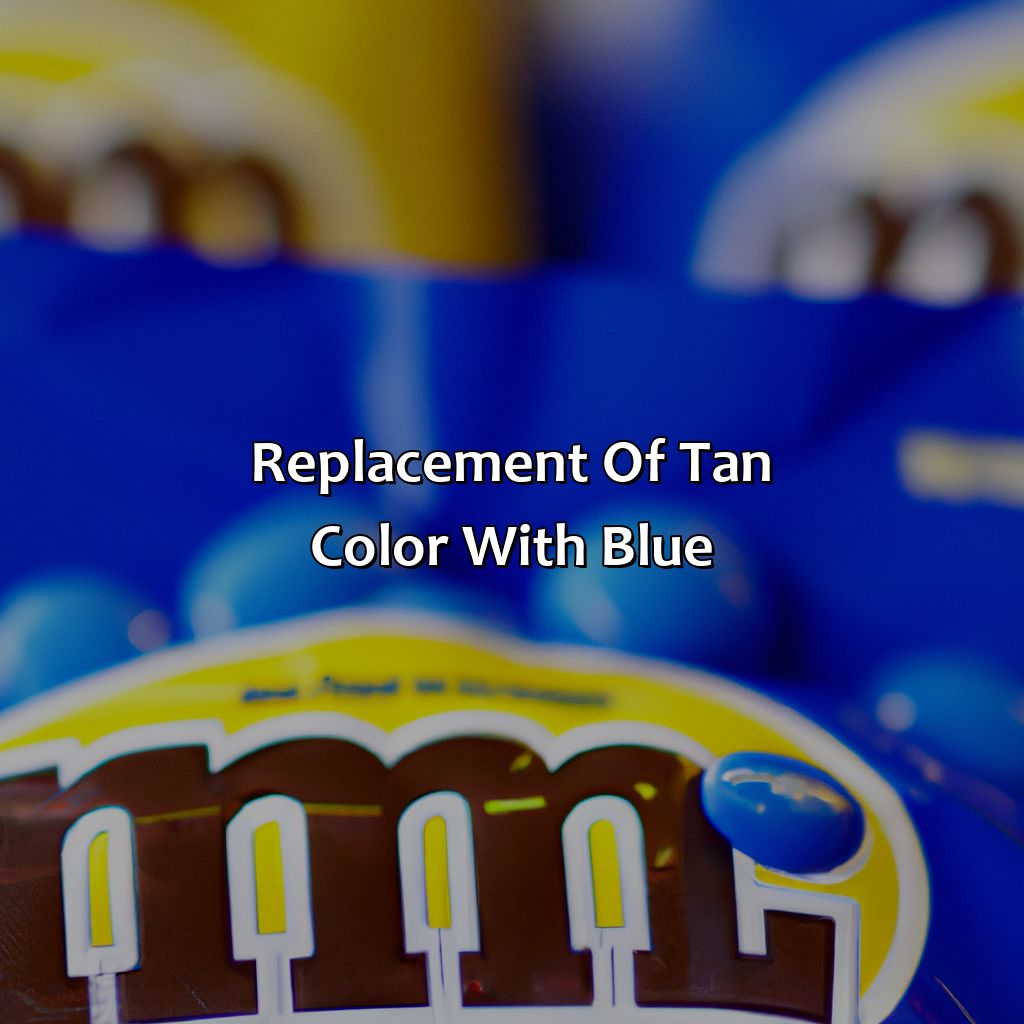In 1995, a monumental shift occurred in the world of candy when M&Ms introduced a vibrant new addition to its classic lineup: blue. This decision was the result of a historic consumer vote that captivated millions across the globe. The blue M&M quickly became a beloved favorite, but it didn’t come without sacrifice. To make room for this new hue, another color had to leave the iconic bag. But what color did blue replace in M&Ms? The answer lies in a fascinating tale of marketing brilliance, consumer engagement, and the power of nostalgia. This decision not only reshaped the M&M lineup but also left a lasting impact on the candy industry and pop culture.
The story of the blue M&M is more than just a simple color swap. It represents a pivotal moment in branding history, where a company successfully leveraged consumer choice to create buzz and loyalty. The decision to introduce blue wasn’t arbitrary; it was backed by extensive research and strategic planning. The company recognized the growing appeal of the color blue in consumer preferences and capitalized on it. By giving the public a voice in the decision-making process, M&Ms created a sense of ownership and excitement that resonated far beyond the candy aisle.
But the question remains: what color did blue replace in M&Ms? To understand the full context, we must delve into the history of the candy, the significance of its colors, and the cultural impact of this change. This article will explore the origins of M&Ms, the role of color psychology in branding, the consumer voting process, and the lasting legacy of this bold move. Whether you’re a candy enthusiast, a branding expert, or simply curious about the colorful world of M&Ms, this story has something for everyone.
Read also:Hannah Hidalgo
Table of Contents
- 1. What Color Did Blue Replace in M&Ms?
- 2. A Brief History of M&Ms
- 3. Why Was the Consumer Voting Process So Successful?
- 4. How Did the Color Blue Revolutionize M&Ms?
- 5. Why Was the Color Green So Important Before the Swap?
- 6. How Does Color Psychology Influence Branding?
- 7. What Impact Did the Blue M&M Have on Pop Culture?
- 8. FAQs About the Blue M&M
What Color Did Blue Replace in M&Ms?
The introduction of blue to the M&Ms lineup in 1995 marked a significant turning point in the candy’s history. But to fully appreciate this change, we must first address the central question: what color did blue replace in M&Ms? The answer is simple yet profound—brown. For decades, brown had been a staple in the classic M&M mix, symbolizing tradition and reliability. However, as consumer preferences shifted and the demand for brighter, bolder colors increased, brown was deemed expendable. This decision wasn’t made lightly; it was the result of a nationwide voting campaign that allowed fans to choose between blue, pink, and purple as the new addition to the lineup.
Brown’s departure was not without controversy. Many loyal fans felt a sense of loss, as brown had been a part of the M&M family since its inception in 1941. However, the company’s decision to replace it with blue was driven by data and consumer feedback. Blue was seen as a modern, forward-thinking choice that resonated with a younger audience. This strategic move not only refreshed the brand but also set a new standard for consumer engagement in the candy industry.
Interestingly, the removal of brown wasn’t entirely permanent. In later years, brown made a triumphant return to the lineup, proving that even in the world of branding, nostalgia can be a powerful force. This decision highlights the importance of balance in marketing—knowing when to innovate and when to honor tradition.
Why Was Brown Initially Chosen for M&Ms?
Brown’s original inclusion in the M&M lineup was no accident. When Forrest Mars Sr. introduced M&Ms in the early 1940s, he envisioned a candy that would appeal to soldiers during World War II. Brown was chosen not only for its earthy, natural appeal but also because it was practical. During wartime, vibrant colors were often associated with luxury, which was not always feasible. Brown, therefore, became a symbol of simplicity and functionality.
Over the years, brown’s role evolved from practicality to personality. The brown M&M became known for its charm and relatability, often depicted as the "everyman" in advertising campaigns. Its removal in 1995 was a bold move that signaled a shift in the brand’s identity. However, its eventual return demonstrated the enduring appeal of classic elements in branding.
A Brief History of M&Ms
Before diving deeper into the question of what color did blue replace in M&Ms, it’s essential to understand the rich history of the candy itself. M&Ms were born out of necessity during World War II when Forrest Mars Sr. observed soldiers eating chocolate pellets coated in sugar to prevent melting. Inspired by this innovation, Mars created his own version, naming it M&Ms in honor of himself and Bruce Murrie, a business partner who helped secure the sugar supply during wartime rationing.
Read also:Sascha Corwin
Initially, M&Ms came in a limited color palette, with brown being one of the primary hues. Over the years, the lineup expanded to include red, green, yellow, orange, and violet, each color representing a distinct personality in advertising. The introduction of blue in 1995 was a continuation of this tradition, adding a fresh dimension to the brand’s identity.
Throughout its history, M&Ms has remained a cultural icon, appearing in everything from movies to television shows. Its colorful characters and playful advertising have made it a household name, and its evolution reflects the changing tastes and preferences of its consumers.
How Has M&Ms Evolved Over the Decades?
The evolution of M&Ms is a testament to its adaptability and innovation. From its humble beginnings as a practical solution for soldiers to its current status as a global phenomenon, the brand has consistently reinvented itself. The introduction of new flavors, such as pretzel and caramel, and the expansion of its product line to include minis and megas, have kept the brand relevant in an ever-changing market.
Each new addition to the lineup has been met with excitement and anticipation, proving that M&Ms’ ability to evolve is one of its greatest strengths. This adaptability has allowed the brand to remain a staple in households worldwide, connecting with generations of consumers through shared experiences and memories.
Why Was the Consumer Voting Process So Successful?
One of the most remarkable aspects of the blue M&M introduction was the consumer voting process that preceded it. In 1995, M&Ms launched a campaign inviting fans to vote for their favorite new color: blue, pink, or purple. This innovative approach to marketing was groundbreaking at the time, giving consumers a rare opportunity to influence a major brand decision.
The campaign was a resounding success, generating millions of votes and unprecedented media attention. The public’s enthusiasm for the process demonstrated the power of engagement and participation in building brand loyalty. By involving fans in the decision-making process, M&Ms created a sense of ownership and excitement that resonated far beyond the candy aisle.
The success of the voting process also highlighted the importance of listening to consumer feedback. By prioritizing the voices of its fans, M&Ms not only strengthened its connection with its audience but also set a new standard for interactive marketing campaigns.
How Did the Voting Process Work?
The voting process was simple yet effective. Fans were encouraged to send in their votes via mail, phone, or online, making it accessible to people of all ages and backgrounds. The campaign’s inclusivity was a key factor in its success, as it allowed everyone to have a say in the future of the brand.
In the end, blue emerged as the clear winner, receiving over 54% of the total votes. This overwhelming support underscored the public’s preference for bold, vibrant colors and reinforced the decision to replace brown with blue. The voting process not only determined the fate of the M&M lineup but also set a precedent for future marketing strategies that prioritize consumer engagement.
How Did the Color Blue Revolutionize M&Ms?
The introduction of blue to the M&M lineup was more than just a color swap; it was a revolution. Blue represented a departure from the traditional, earthy tones that had defined the brand for decades. Its bright, modern aesthetic appealed to a younger, more adventurous audience, signaling a shift in the brand’s identity.
Blue’s impact was immediate and far-reaching. It became a symbol of innovation and progress, resonating with consumers who were eager for something new and exciting. The addition of blue also opened the door for new marketing opportunities, allowing M&Ms to explore fresh themes and narratives in its advertising.
Interestingly, the success of blue inspired other brands to follow suit, leading to a wave of colorful innovations across the candy industry. This ripple effect demonstrated the power of bold decisions and the importance of staying ahead of consumer trends.
What Made Blue Such a Popular Choice?
Blue’s popularity can be attributed to several factors. Psychologically, blue is often associated with calmness, trust, and reliability, making it an appealing choice for consumers. Additionally, its vibrant hue stood out against the more muted tones of the original lineup, creating a striking visual contrast that captured attention.
From a marketing perspective, blue offered endless possibilities for creative expression. Its versatility allowed M&Ms to explore new themes and narratives, from futuristic settings to playful adventures. This adaptability ensured that blue remained a relevant and engaging addition to the lineup for years to come.
Why Was the Color Green So Important Before the Swap?
Before the introduction of blue, green held a special place in the M&M lineup. Known for its quirky personality and playful demeanor, green was often depicted as the "fun one" in advertising. Its popularity among consumers made it a key player in the brand’s identity, and its removal was unthinkable at the time.
However, the decision to keep green while replacing brown with blue highlighted the importance of balance in branding. While green represented playfulness and adventure, blue brought a sense of modernity and sophistication. Together, they created a dynamic duo that resonated with a wide range of consumers.
Green’s continued presence in the lineup also demonstrated the importance of maintaining core elements while introducing new ones. By preserving its beloved characters and colors, M&Ms ensured that its evolution remained true to its roots.
How Did Green Contribute to the Brand’s Identity?
Green’s contribution to the M&M brand was significant. Its playful personality and vibrant hue made it a standout character in advertising, often featured in humorous and lighthearted scenarios. This personality helped to humanize the brand, making it relatable and approachable to consumers of all ages.
By maintaining green’s presence alongside the introduction of blue, M&Ms struck a perfect balance between tradition and innovation. This strategic approach ensured that the brand remained relevant while honoring its legacy, proving that evolution doesn’t have to come at the expense of identity.
How Does Color Psychology Influence Branding?
The decision to introduce blue to the M&M lineup was heavily influenced by color psychology, the study of how colors affect human behavior and decision-making. Blue, in particular, is associated with trust, reliability, and calmness, making it an ideal choice for a brand looking to appeal to a broader audience.
Color psychology plays a crucial role in branding, as it can influence everything from consumer perception to purchasing behavior. By carefully selecting colors that align with their brand values and target audience, companies can create powerful emotional connections with their customers.
In the case of M&Ms, the introduction of blue was a masterclass in leveraging color psychology to enhance brand appeal. Its vibrant hue and positive associations helped to solidify its place in the lineup, proving that color choices can have a profound impact on brand identity and success.
What Are the Psychological Effects of Blue?
Blue’s psychological effects are well-documented. It is often associated with calmness, trust, and reliability, making it a popular choice for brands looking to convey stability and dependability. In addition to its emotional impact, blue also has a strong visual appeal, standing out against more muted tones and creating a striking contrast that captures attention.
For M&Ms, the psychological effects of blue were instrumental in its success. By aligning the color with its brand values, the company was able to create a powerful connection with its consumers, one that resonated on both an emotional and visual level.
What Impact Did the Blue M&M Have on Pop Culture?
The introduction of the blue M&M had a profound impact on pop culture, cementing its place in the cultural lexicon as a symbol of innovation and creativity. Its vibrant hue and playful personality made it a favorite among fans, inspiring everything from fan art to social media trends.
Blue’s influence extended beyond the candy aisle, appearing in movies, television shows, and even music videos. Its widespread popularity demonstrated the power of branding to transcend traditional boundaries and become a part of everyday life.
Interestingly, the blue M&M also became a symbol of inclusivity and diversity, representing the importance of embracing change and new perspectives. This message resonated with audiences worldwide, further solidifying its status as a cultural icon.


